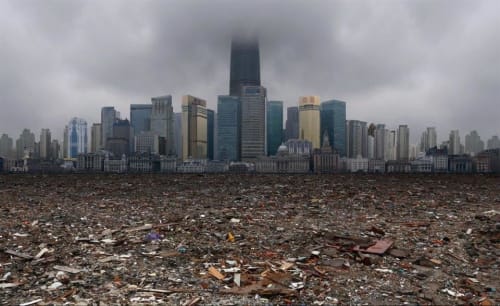Dali takes us to places of utter fantasy, where giraffes burn and watches melt. Paterson takes us to places that once were, are, and may yet be.
The Artist and Sanderson Contemporary gratefully acknowledge support from the Annual Commission of The Auckland Photography Festival and the Wallace Arts Trust in helping to realise this exhibition.
The invention of digital photography in 1975, and subsequent computer programs that enabled photographers to alter and add to their pictures, changed photography profoundly. It suddenly became much more than ‘point and shoot’; more than just being on the spot at the right time. Critics and the public realised that the digital age opened up a whole new field of creativity, providing new tools to make art. Painters no longer had a monopoly on the invented image. The challenge hadn’t changed – bad photographers could and would still make bad work. But good photographers could now become visionaries.
Forty years on, P J Paterson has it both ways, as a photorealist painter and as a photographer. He is an undoubted visionary, and carries us breathless and amazed into his created worlds. Because they are composed of bits of reality, the sense of strangeness and wonder is much greater than, say, what one feels when viewing a Dali painting. We know Dali made it all up out of his head; with Paterson we know that he didn’t. Those acres of junked cars, those endless ranks of bicycles, those intimate close-up heads – they are real, the detail is so mesmerising. And those distant hills hung with low cloud – anyone familiar with wild New Zealand landscapes will recognise them at once. Dali takes us to places of utter fantasy, where giraffes burn and watches melt. Paterson takes us to places that once were, are, and may yet be.
Paterson looks to a past full of optimism and a future full of dread. Demographers tell us the world population will hit 9 billion by 2050, most of these people being crammed into cities. Many large cities are already starting to degenerate into commercial enclaves surrounded by awful slums and piles of garbage. When such terminal trash-glut overruns New Zealand we know that humankind will be on its last legs. As no people appear in Paterson’s photographs – even those depicting metropolises like Shanghai –perhaps the end has already come.
Paterson’s photographic works came about through a confluence of circumstances. During visits to the famous ‘Smash Palace’ wrecking yard in the Central North Island of New Zealand he took numerous photos to use as reference shots for the paintings he was making at the time. Not long after, he travelled to Europe to live in a small town in Portugal where his struggle finding studio space and materials to paint with led to experiments with Photoshop. He began to make digital collages from the car photos he had taken, still with a view to painting them eventually. It took him a month of solid work to produce the first ‘Car wreck’ piece (Glory 2011); it was only then that he thought that it would work better as a photograph than a painting. While Paterson’s first few works were pieced together from images that he had on hand, nowadays when he travels he takes a large number of images, amassing the source material that will one day form the basis of his work.
Describing his working methods Paterson says: “I think in the past I have seen the two strands of my art practice as being quite separate; the painting was a bit lighter and influenced by pop art, while the photography was usually darker and more political. But I think in the last few months they are coming closer together. I tend to think of my painting process as being like a human dot matrix printer, so it’s not entirely removed from printing a digital photo.” He also sees a practical advantage in maintaining two parts to his practice: “When I have just made paintings for a few months, I have usually exhausted myself physically and mentally; so it is great to be able to switch to the camera and computer to do something different.”
Despite the provocative content of his works, Paterson does not see himself as a devoted environmental crusader, or exclusively anti-capitalist. He can see both sides of the picture. This vision is well expressed in Yu Garden, 2015, where spectral buildings under construction loom behind an abandoned armchair. One feels that little true comfort will be found in the new habitations, but the people must be housed. In this way Paterson documents the dichotomy inherent in modern society – affording undreamt-of advantages, along with intensive land-use and waste – as we drift inexorably towards megacity development.
Essay by Warwick Brown
